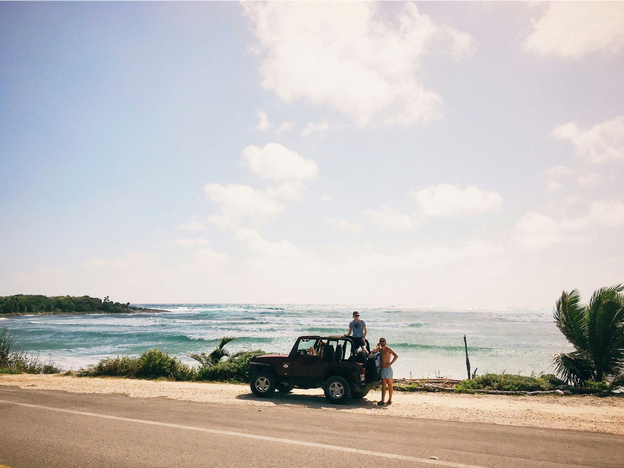Planning travel involves numerous exciting steps, from booking flights to mapping destinations. Yet, amidst the anticipation, a practical question looms for vehicle owners: what to do with your car when you travel? Leaving your trusted car behind requires careful thought to ensure its safety and readiness upon return. Whether it’s a short vacation or an extended period away, making smart choices about your parked car provides peace of mind, becoming one less thing to worry about during your journey. Neglecting proper preparation can lead to avoidable headaches later. These simple steps help protect your car.
The best approach depends on your trip length, budget, and available resources. Options range from utilizing specialized parking services to relying on trusted friends or family. Some travelers facing long absences might even weigh selling their car, perhaps exploring venues like an Illinois auto auction, though most simply need secure storage. Preparing your car correctly before you leave is crucial for its well-being while sitting. Let’s explore the most effective tips and strategies for managing your car during travel. Prepare your car for a worry-free trip.
Contents
- Secure Spots: Parking Options When Leaving Your Car Behind
- Prep Your Ride: Getting Your Parked Car Ready for Your Trip
- Peace of Mind: Security and Insurance Considerations
- Hitting the Road: Taking Your Car on Your Journey
- Pre-Drive Checklist: Essential Road Trip Car Preparation
- Conclusion: Making the Right Choice for Your Car and Trip
- Frequently Asked Questions (FAQ)
- Q1: Should I disconnect my car battery if I travel for a month?
- Q2: Is it better to leave my gas tank full or empty when storing my car?
- Q3: Will my tires get flat spots if I leave my car parked for two weeks?
- Q4: Does my car insurance cover my vehicle while parked at the airport?
- Q5: Is it safe to leave my car parked on the street while on vacation?
Secure Spots: Parking Options When Leaving Your Car Behind
If your travel plans don’t involve driving your own car, the first task is finding a safe, suitable place to leave your car parked. Various locations offer different mixes of cost, convenience, and security. Evaluate these parking options carefully.
Choosing airport parking offers undeniable convenience. You can park your car relatively close to the terminal, minimizing transfer hassles. Many major airports provide different parking tiers, from premium garages to economy lots connected by shuttles. However, this convenience often comes at the highest cost, with daily parking rates accumulating quickly, especially for trips lasting more than a few days. Airport parking is a common choice for travelers needing quick access. Research airport parking rates beforehand. Consider how long you need to park at the airport. Many airports offer online booking. This is one way to park your vehicle.
Asking trusted friends or a family member to store your car is often the most cost-effective solution, provided they have available space like a driveway or garage. This arrangement relies heavily on mutual trust and clear communication. Ensure they understand any expectations, like needing to move the car occasionally, and are comfortable with the responsibility. This personal arrangement offers excellent safety if the location is secure. It’s a great idea if feasible for your family or friends. Many travelers park this way.
Finally, leaving your car parked at home is viable, especially for shorter durations like a week or two. If using your garage, ensure it’s locked. If parking in your driveway, remove all valuables from the car and consider visible deterrents like a steering wheel lock. Street parking presents more risks; if unavoidable, choose well-lit, familiar safe areas within your neighborhood. Basic common sense and making the car look less abandoned (asking a neighbor to collect mail, perhaps) enhance safety. Protecting your parked car at home requires vigilance. This car needs to appear attended.
Prep Your Ride: Getting Your Parked Car Ready for Your Trip
Wherever you decide to park your car, taking a few preparation steps before leaving minimizes potential problems when you return, especially if the car will be sitting for more than a couple of weeks. Proper preparation is key for any vehicle left for an extended period. These simple steps help maintain your car’s condition.
Start with cleanliness. Thoroughly clean the interior, removing any food remnants, trash, or spills that could attract pests or create unpleasant odors during your trip. A clean interior makes for a much nicer welcome home. Washing the exterior protects the paint finish from environmental factors like bird droppings or tree sap, especially crucial if the car will stand outdoors. Putting away a clean car prevents issues.
Address the fuel level. For storage lasting several weeks or more, filling the gas tank close to full is generally recommended. This strategy minimizes air space inside the gas tank where moisture from condensation can accumulate, potentially leading to rust or fuel degradation over time. For modern cars and shorter trips (under a month), this is less critical, but filling the gas tank remains a good preventative measure.
Battery drain is a common issue for parked cars. A vehicle’s battery naturally discharges slowly even when off, and modern cars have electronics drawing small amounts of power constantly. For absences longer than two or three weeks, consider using a battery tender (also called a trickle charger) if your parking spot allows access to an electrical outlet (like a garage). This device keeps the battery optimally charged. Alternatively, for longer storage without power access, disconnecting the negative battery terminal stops parasitic drain, though you’ll lose clock, radio presets, and other settings. Protecting your battery saves hassle upon return.
Don’t forget the tires. Ensure all tires, including the spare, are inflated to the correct tire pressure indicated on the driver’s side doorjamb placard. Tires naturally lose pressure over time. For very long storage (multiple months), slightly overinflating the tires (by a few PSI, check recommendations) helps prevent flat spots from forming where the tires rest on the ground. Remember adjusting tire pressure back to normal before driving the car again. Proper tire care prevents flat spots. Check your tires before leaving.
Consider using a car cover, particularly if parking outdoors or in a dusty environment. A quality, breathable cover shields the paint from UV rays, dust, dirt, bird droppings, and minor scratches. Ensure the car is clean before putting the cover on to avoid trapping grit underneath, which could abrade the paint. Choose a cover designed for your specific vehicle type and parking situation (indoor vs. outdoor). A good cover helps protect your parked car.
Peace of Mind: Security and Insurance Considerations
Taking a few extra security and administrative steps before your trip adds peace of mind regarding your parked vehicle. Safety doesn’t stop when you park the car.
If leaving for a very extended period (several months or longer), it’s smart to notify your car insurance provider. Depending on your policy and the laws in your area, there might be options for adjusting coverage (e.g., reducing liability if the car won’t be driven at all) which could potentially save money. Confirm your comprehensive coverage remains active to protect against theft, vandalism, or weather damage while the car is parked.
Remove absolutely all valuables from your car’s interior – electronics, sunglasses, bags, chargers, loose change. Don’t forget personal documents in the glovebox or center console; take essential paperwork like registration/insurance cards with you or store them securely elsewhere. An empty car is less appealing to potential thieves. Lock all doors securely. Consider using a visible steering wheel lock as an added deterrent.
If your car is parked at home, try making it look less obviously unattended, especially during a long vacation. Stop mail and newspaper delivery, or ask a neighbor to collect them. Use timers for interior lights. If possible and safe, ask a trusted neighbor or family member to check on the car occasionally or even move it slightly in the driveway. These small actions enhance security.
Hitting the Road: Taking Your Car on Your Journey
Sometimes, the answer to “what to do with your car when you travel” is simple: bring it along! Road trips offer unparalleled freedom to explore at your own pace, discover hidden gems, and enjoy scenic routes across the country or even the world. Taking your own vehicle provides familiarity and convenience. Road trips create lasting memories for family travelers.
Planning road trips involves mapping your route. Decide whether you prioritize speed via direct highways or prefer leisurely scenic routes offering unique sights. Utilize mapping apps or websites to identify points of interest, potential overnight stops, gas stations, and rest areas along your path. Knowing your approximate journey plan reduces stress. Discover new places on your road trip.
Packing smart is essential for comfortable road trips. Keep necessary items easily accessible – snacks, water, a first-aid kit, phone chargers, entertainment for passengers. Secure luggage properly in the trunk or cargo area to prevent shifting. Avoid overloading the vehicle beyond its weight capacity. Efficient packing enhances the road trip experience for all fellow travelers.
Pre-Drive Checklist: Essential Road Trip Car Preparation
Before embarking on long road trips, ensuring your car is in good condition is vital for safety and reliability. Proper preparation prevents breakdowns.
Perform basic maintenance checks. Verify the engine oil level and condition. Check all other essential fluids: coolant, brake fluid, washer fluid. Inspect tire pressure on all four tires plus the spare, looking for wear or damage. Test headlights, taillights, and turn signals. Ensure wipers are effective. Check the air conditioning system, especially for summer road trips. Consider getting a professional vehicle inspection if unsure. Prepare your car thoroughly. Change the oil if due.
Pack an emergency kit containing jumper cables, a flashlight, basic tools, a first-aid kit, reflective triangles, and perhaps a portable tire inflator. Ensure your driver’s license, registration, and insurance information are current and accessible. Having these items provides security during your journey.
Conclusion: Making the Right Choice for Your Car and Trip
Ultimately, deciding what to do with your car when you travel involves weighing convenience, cost, security, and trip duration. Leaving your car? Choose secure parking – airport, off-site, trusted friends, or storage – and prepare it properly by cleaning it, managing fuel, caring for the battery and tires, and considering a cover. Taking these simple steps ensures your car is safe and sound, giving you one less thing to worry about. Taking your car? Prepare it meticulously for the road trip ahead with maintenance checks and smart packing for a safe and enjoyable journey. Smart planning protects your vehicle and enhances your travel experience. Finally, you can relax and forget car concerns.
Frequently Asked Questions (FAQ)
Q1: Should I disconnect my car battery if I travel for a month?
Disconnecting the negative terminal prevents drain for a month-long trip but resets electronics. A better option, if power access exists where you park, is using a battery tender (trickle charger) to maintain the charge safely.
Q2: Is it better to leave my gas tank full or empty when storing my car?
For storage beyond a few weeks, keeping the gas tank mostly full (about 3/4 or more) is generally advised to minimize condensation buildup inside the tank. Adding fuel stabilizer is recommended for multi-month storage.
Q3: Will my tires get flat spots if I leave my car parked for two weeks?
Flat spots are highly unlikely after only two weeks. This concern applies more to vehicles sitting stationary for several months. Ensuring correct tire pressure before leaving is sufficient protection for shorter trips.
Q4: Does my car insurance cover my vehicle while parked at the airport?
Typically, your comprehensive insurance coverage remains active for theft, vandalism, or weather-related damage while parked at the airport or other locations. Verify specifics with your insurer, as liability needs might differ if the car isn’t driven.
Q5: Is it safe to leave my car parked on the street while on vacation?
Street parking poses higher risks (theft, damage, parking tickets/towing) than secure garages or lots, especially for an extended period. If unavoidable, choose well-lit, familiar safe areas and remove all valuables, but it’s generally not the preferred option.

Ross, an exam specialist with a passion for education, writes comprehensive articles on exam results and admit cards. His expertise ensures students receive reliable information and useful tips to excel in their exams.
























